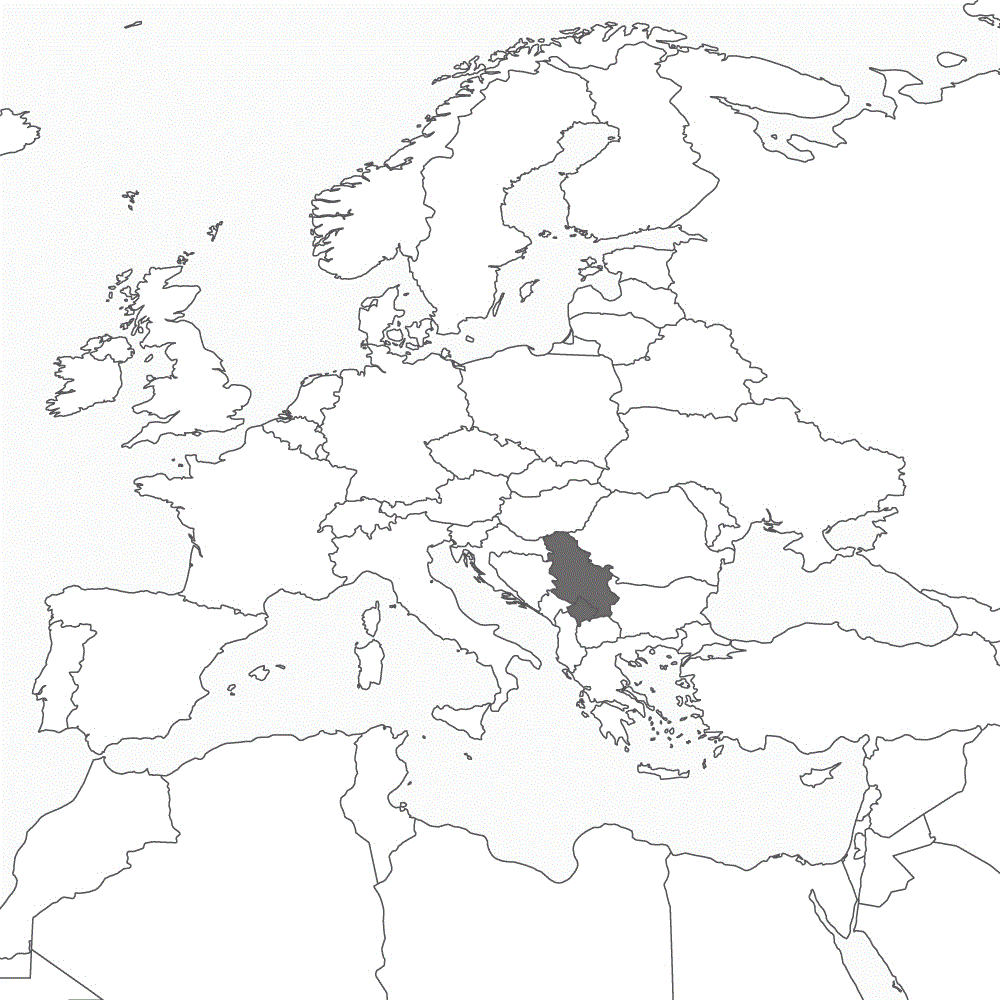Maximum Split
NOVISAD/SUBOTICA A drive for autonomy, unleashed at the beginning of March, has been provoking harsh conflicts in the Serbian province of Vojvodina. This quest for autonomy is based on the initial groundwork by various German organizations representing German strategies for ,,regionalization"of the Balkans. Critics judge the offensive ( ,,Subotica-Initiative") as a direct attack on Serbia's territorial integrity.
For quite some time, secessionist efforts in Vojvodina have been able to count on German support. Already in 1993, the German magazine ,,Ethnos-Nation" 1)claimed that there was no international agreement ,,providing for acknowledgement of Vojvodina as part of Serbia (remainder of Yugoslavia)."Prevention of a civil war would require a guarantee of ,,maximum autonomy"for Vojvodina.
Protecting Powers...
The war against Yugoslavia, substantially assisted by Berlin, provided a special impetus to the endeavors to gain autonomy. Immediately after NATO's bombardments, the ,,Reformist Coalition of Vojvodina"appeared. One of its spokesmen, Dejan Janca, expert in international law, demanded in the summer of 1999 that Serbia be divided up into five autonomous regions: Vojvodina, Sandzak, Southeast Serbia, Northwest Serbia and Greater Belgrade.
During a conference in November of 2000, the German Southeast European Society offered Janca the opportunity to discuss his concept with interested circles. Present were, among others, a representative of the ,,Europaeisches Zentrum fuer Minderheitenfragen"(European Center for Minority Issues, ECMI) which was planned and financed by the German government, as well as high ranking Hungarian foreign policy specialists. Budapest is considered as a strong advocate of extensive rights for ,,ethnic groups"and encourages nationalist conflicts, by appearing as a protecting power of ,,expatriate Hungarians."
... redefine...
After the coup of October 2000, which had been actively assisted by Germany, the Federal Union of European Nationalities (FUEN), which was under German influence, expanded its activities in Yugoslavia. In September of 2001, the leadership of the FUEN traveled to Subotica, Novi Sad and Belgrade to explore the situation. During a meeting, organized specifically for minority groups, ,,Ethnic Group"specialists closely appraised all organizations which might be considered suitable for their politics. In May of 2002, the FUEN conducted its annual ,,congress of nationalities"in Subotica where, under the leadership of the ECMI, ,,border crossing cooperation"was examined. It was suggested that the Vojvodina region being ,,European"should ,,redefine itself politically."The FUEN would assist and would ,,reinterpret the traditional definition of the border."
...and achieve ,,internationalization"
During the same year Vojvodina was admitted as a full member on the Committee of the Regions of the European Council which, according to Berlin, is one of the most important instruments for the regionalization of the European Union. The recent admission of Novi Sad into the ,,Network of Danube Offices", guided by Germany, fueled further fears that the Serb territory intended to split off from Belgrade with German encouragement. The majority of the members of parliament of the Vojvodina Province had recently decided on its own flag; whereupon the parliamentary session in Novi Sad had to be interrupted because of a bomb threat.
Now, the autonomous organizations of Vojvodina fuel tensions further with a ,,Subotica-Initiative". There is mention of turning to the EU in order to accomplish complete detachment of the province from Belgrade by internationalizing the conflict. A newly established ,,Serbian block"resists the initiative and accuses its organizers of mounting a direct attack on Serbia's territorial integrity.
1) The director of the Cologne Institute for ,,Eastern Law", Georg Brunner, and the director and founder of the European Center for Minority Issues (ECMI), Stefan Troebst, were the co-editors of ,,Ethnos-Nation". See also Georg Brunner: Nationalitaetenprobleme und Minderheitenkonflikte in Osteuropa. Strategies for Europe, in the in the category of history.
Sources:
Tibor Turi: Magyaren und Serben in der Vojvodina; in: Ethnos-Nation 1 (1993) Heft 1, S. 59-68.
Internationale Tagung Die Vojvodina: Chancen und Hindernisse des lokalen Dialogs; www.ungarisches-institut.de
Pressemitteilung 2002-21: Die regionale Minderheitenvielfalt in der Vojvodina und die rechtlichen Aspekte des Minderheitenschutzes in den anliegenden Laendern; www.fuen.org
Erste ,,Gesamt-Vojvodina-Konvention"geplant; DW-Monitor Ost-/Suedosteuropa 20.02.2004
Initiative für vollstaendige Autonomie der Vojvodina verabschiedet; DW-Monitor Ost-/Suedosteuropa 02.03.2004
Gegen-Deklaration zu ,,Subotica-Initiative"in Novi Sad verabschiedet; DW-Monitor Ost-/Suedosteuropa 02.03.2004
Vojvodina als neue Konfliktzone Serbiens; Der Standard 03.03.2004
